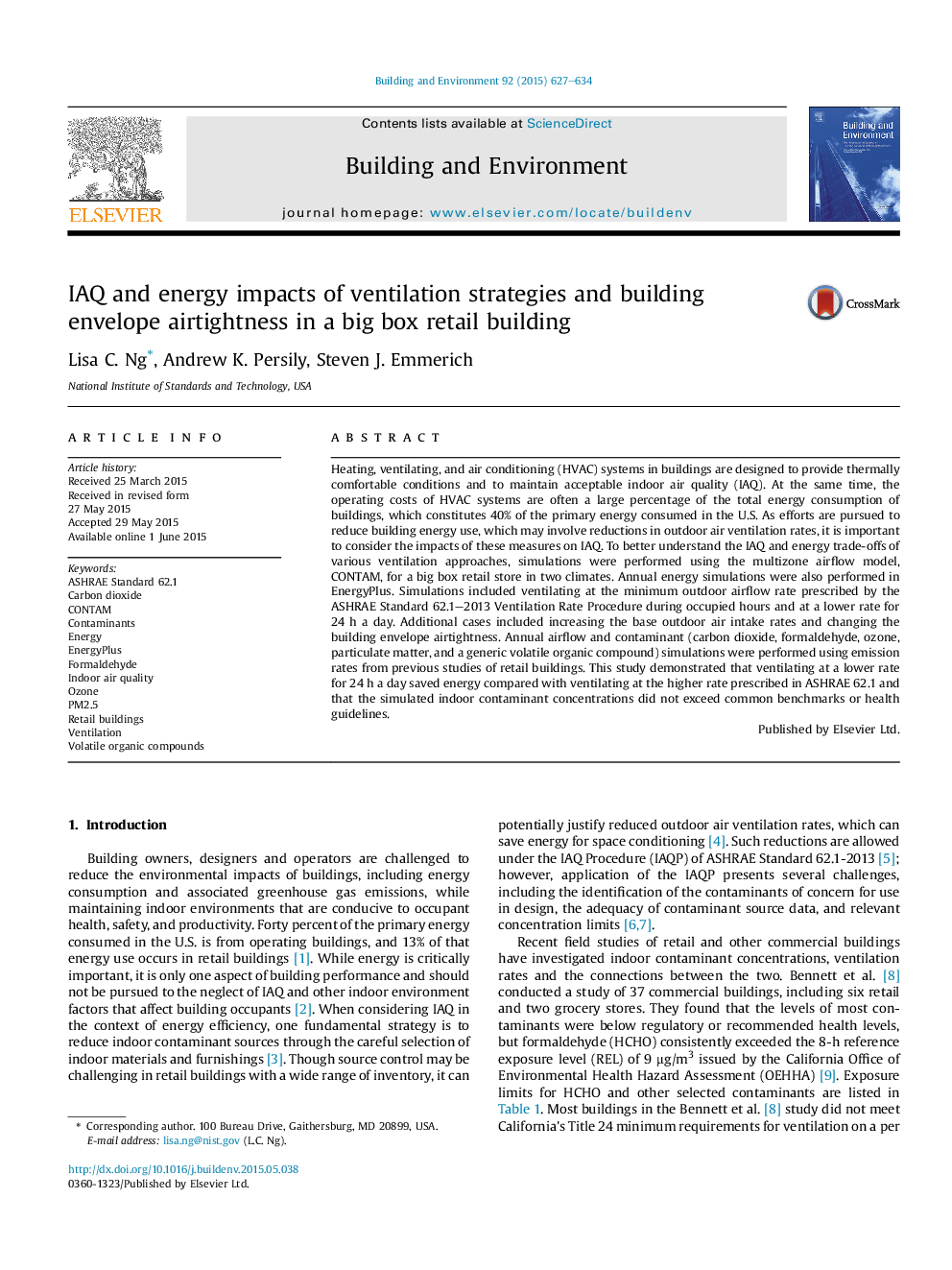| Article ID | Journal | Published Year | Pages | File Type |
|---|---|---|---|---|
| 6699862 | Building and Environment | 2015 | 8 Pages |
Abstract
Heating, ventilating, and air conditioning (HVAC) systems in buildings are designed to provide thermally comfortable conditions and to maintain acceptable indoor air quality (IAQ). At the same time, the operating costs of HVAC systems are often a large percentage of the total energy consumption of buildings, which constitutes 40% of the primary energy consumed in the U.S. As efforts are pursued to reduce building energy use, which may involve reductions in outdoor air ventilation rates, it is important to consider the impacts of these measures on IAQ. To better understand the IAQ and energy trade-offs of various ventilation approaches, simulations were performed using the multizone airflow model, CONTAM, for a big box retail store in two climates. Annual energy simulations were also performed in EnergyPlus. Simulations included ventilating at the minimum outdoor airflow rate prescribed by the ASHRAE Standard 62.1-2013 Ventilation Rate Procedure during occupied hours and at a lower rate for 24Â h a day. Additional cases included increasing the base outdoor air intake rates and changing the building envelope airtightness. Annual airflow and contaminant (carbon dioxide, formaldehyde, ozone, particulate matter, and a generic volatile organic compound) simulations were performed using emission rates from previous studies of retail buildings. This study demonstrated that ventilating at a lower rate for 24Â h a day saved energy compared with ventilating at the higher rate prescribed in ASHRAE 62.1 and that the simulated indoor contaminant concentrations did not exceed common benchmarks or health guidelines.
Keywords
Related Topics
Physical Sciences and Engineering
Energy
Renewable Energy, Sustainability and the Environment
Authors
Lisa C. Ng, Andrew K. Persily, Steven J. Emmerich,
